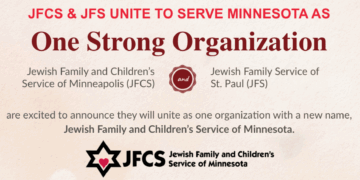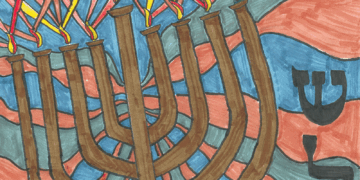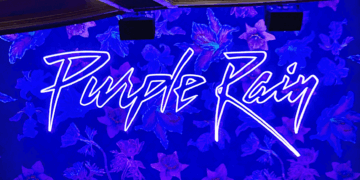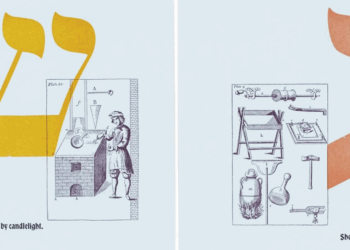It was media preview day today for the extensively publicized new exhibit, The Dead Sea Scrolls: Words That Changed the World, at the Science Museum of Minnesota. The exhibit of the earliest version of the Hebrew Bible opens tomorrow at the museum in downtown St. Paul opens and runs through Oct. 24.
 A fragment from the Genesis scroll. (Image courtesy of Israel Antiquities Authority)
A fragment from the Genesis scroll. (Image courtesy of Israel Antiquities Authority)
The Israel Antiquities Authority has provided artifacts and five scroll fragments for this show, which is seven years in the making. Because the ancient scroll fragments are extremely fragile, the five scrolls on exhibit will be displayed for 90 days, then they will be replaced by five other scrolls; a third set of five scroll fragments will conclude the exhibit.
From the Science Museum’s press release:
The scrolls, which are approximately 2,000 years old, include fragments of the earliest known texts of the Bible and are regarded as one of the most significant archaeological finds of the 20th century. After their initial discovery, archaeologists have excavated and pieced together tens of thousands of scroll fragments into more than 900 separate documents — from biblical manuscripts and commentary to religious legal writings. These ancient Hebrew writing fragments are now archived and conserved by the Israel Antiquities Authority and, on rare occasion, are put on public display at world-class museums.
The question posed by the Star Tribune coverage was: “Can Dead Sea Scrolls live up to hype?”
Religion writer Jeff Strickler quoted Michael Wise, professor of Hebrew Bible and ancient languages at Northwestern College in Roseville: “We are a culture that revolves around hype. Every time I stand in the line at the grocery store I see huge headlines about Brad and Angelina. We use these words so much that they no longer mean anything.”
The words we see in the Dead Sea Scrolls have come down to us through the ages and influenced the course of Western civilization. Families — Jewish, Christian and of other faiths — likely will be fascinated by this exhibit.
Apart from ancient Indian burial mounds, and some artifacts in the Minneapolis Institute of Arts, the Judean Desert scrolls are among the most ancient items now in Minnesota. At the media preview, Alex Jassen, professor of early Jewish history at the University of Minnesota, told me that the Dead Sea Scrolls were the literature of their day, a time before the Tanach, the Hebrew Bible, had been completed in more or less the form that we know today.
I also was interested in writings from the scrolls that did not make the final cut in the Bible. Jassen discussed the Book of Enoch, for example, which was a popular text of the ancient Aramaic-speaking Jews. Enoch is quoted in the New Testament, but is not found in the Tanach.
Hava Katz, chief curator of the “National Treasures” for the Israel Antiquities Authority, also was on hand today. She told me that her agency was pleased to be collaborating with the Science Museum. And she mentioned that the Dead Sea Scrolls have been exhibited throughout North American, Europe and Japan, since they were discovered in 1947, by a Bedouin shepherd in the famed Qumran caves by the shore of the Dead Sea.
Two of the scrolls now on exhibit in St. Paul — the Genesis and Temple scrolls — have never been on public display, neither at the Shrine of the Book at the Israel Museum in Jerusalem or anywhere else, according to Katz.
***
The scroll fragment from the book of Genesis pictured here  will be part of the third set of five scrolls. It depicts Genesis 48: 8-10, which describes the patriarch Jacob and his blessing of Joseph’s sons, Ephraim and Manasseh. Below is a translation of an excerpt of this fragment:
And Israel beheld Joseph’s sons, and said, “Who are these?” And Joseph said unto his father, “They are my sons, whom God hath given me here.” And he said, “Bring them, I pray thee, unto me, and I will bless them.”
— Mordecai Specktor









 A fragment from the Genesis scroll. (Image courtesy of Israel Antiquities Authority)
A fragment from the Genesis scroll. (Image courtesy of Israel Antiquities Authority)










The scrolls are without doubt the most evocative relics found anywhere in the Middle East